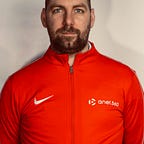Direct your energy towards change
Help your colleagues, employees to step out of their comfort zone into their growth zone.
After I read the book, ‘Good to Great’ by Jim Collins, I was curious about what differentiates good drivers from great ones, or good drivers from average ones. Or more generally, what differentiates a good employee from a high performer, and how can we help underperforming employees to be better at what they do?
Asking the right questions
Unfortunately, many people spend their entire lives focusing on the wrong questions. To learn something successfully or to be better at what we are doing, it’s not enough to ask questions, but we have to ask effective questions.
We believe that to help employees perform better, we have to help them to ask the right questions, clarify their understanding, and focus their attention on the things that matter.
The question for us was how could we find ways to improve the training experiences we deliver. That’s when I found out about Tom Senninger’s Learning Zone Model, which is based on a learning science concept called the Zones of Proximal Development.
The basic zones in Senninger’s model are:
- COMFORT ZONE — Here things are familiar to us; we don’t have to take any risks. This is important because it gives us a place to return to, to reflect and make sense of things. Because we use known skills and abilities to achieve known outcomes, there’s also not much room for learning.
- LEARNING ZONE — Here the skills and abilities to achieve specific outcomes are not in hand — but are within reach. It can be an uncomfortable stretch. But it does not call for panic. And that is when we learn and grow. Exploring beyond the edge of our abilities slowly expands our Comfort Zone.
- FEAR ZONE — Here the overall feeling of panic inhibits us from developing new skills or abilities. It’s overwhelmingly uncomfortable here. Since all our energy is used up in managing/controlling our anxiety, there is no room for learning. We wanted to push employees into the outer orbits of the Learning Zone without dipping into the Fear Zone.
- GROWTH ZONE — Once employees are in their Learning Zone, our goal is to help them to ask the right questions, find purpose, set new goals in their life. In this zone, we want to help employees to adopt the habit of improvement, to be liberated from worry about your weaknesses or defects because they can adapt and improve whenever they like.
Building our own learning framework
We used Senninger’s as a basis for creating our own learning framework. Our training methodology is built around three simple ideas — Know, Flow, and Grow. It’s designed to help learners enjoy using our products and training, but we also want to gather data on how can we help them to learn based not just on their learning style, but also on their Zone of Proximal Development.
The ultimate goal of this is to bring the intellectual and emotional, social, and technological components into balanced play; to learn to see and feel them in relationships.
Taking it one step further
The idea for us now is to further develop our training experience methodology and build a framework that will encourage trainers and employees to explore and venture into the unknown. The challenge is to do this by combining traditional training methods with digitised products.
We don’t want to provide just another training product. We want to design and develop solutions that help learners to take small steps that will help them move from their Comfort Zone to their Learning Zone and then into their Growth Zone. We believe that once we have helped them to move from their comfort zone to their growth zone, we can further develop their driving skills which will ultimately lead better driver behaviour and to safer roads.
As Warren Buffet once said, “In a chronically leaking boat, energy devoted to changing vessels is more productive than energy devoted to patching leaks.”
Direct your energy towards change, and contact us for more information on how can we help.
References: http://www.thempra.org.uk/social-pedagogy/key-concepts-in-social-pedagogy/the-learning-zone-model/, https://dlibrary.stanford.edu/ambiguity/learning-zone-reflection-tool
